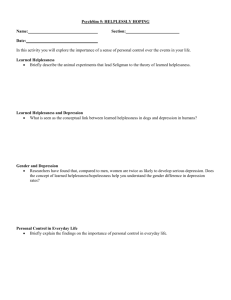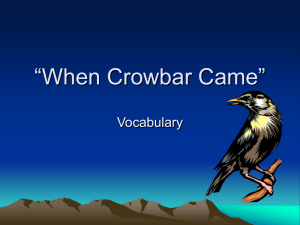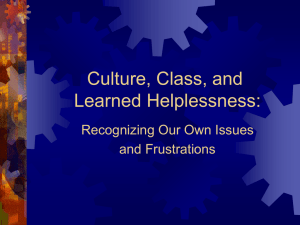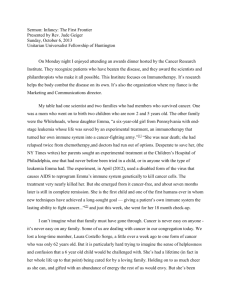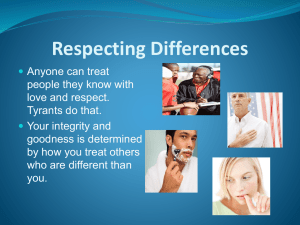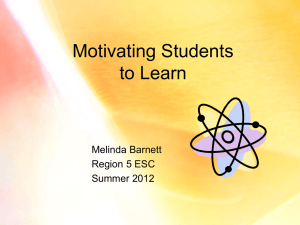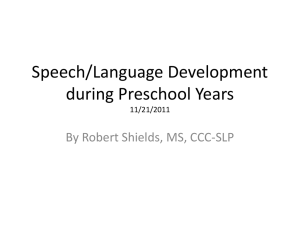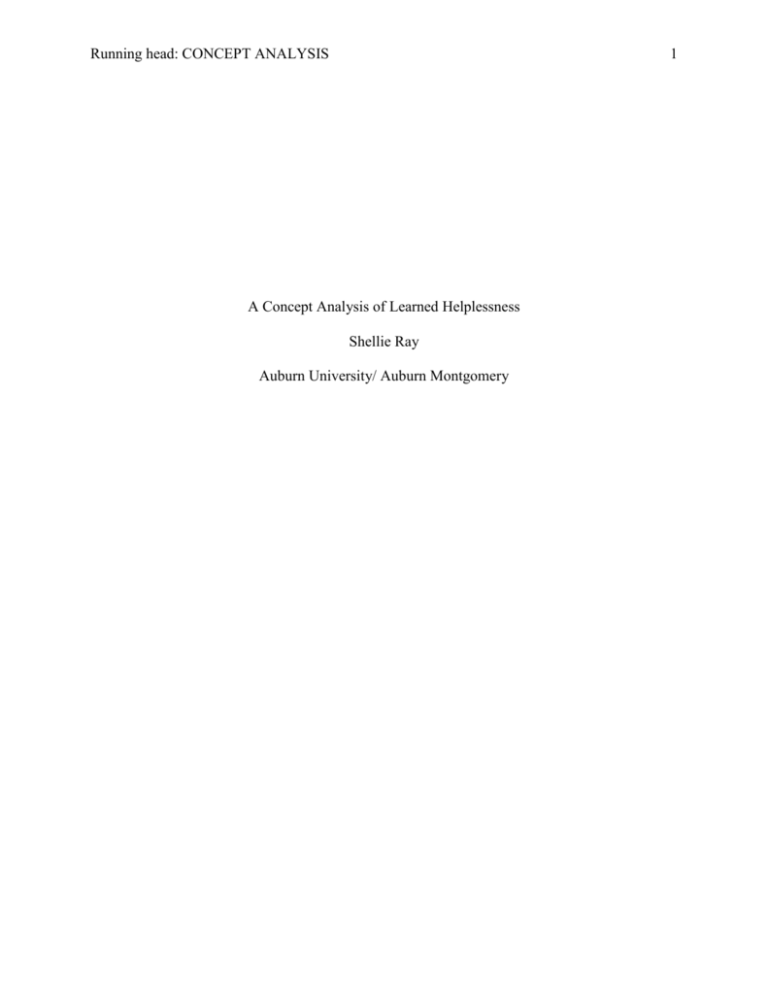
Running head: CONCEPT ANALYSIS
1
A Concept Analysis of Learned Helplessness
Shellie Ray
Auburn University/ Auburn Montgomery
CONCEPT ANALYSIS
2
Abstract
The literature contained in this paper will explore the phenomenon of learned helplessness
through a concept analysis. Walker and Avant’s method for concept analysis was used to identify
learned helplessness’ antecedents, defining attributes, consequences, and empirical referents.
Learned helplessness is when people experience uncontrollable events and they form the
expectation that future events will be uncontrollable. Learned helplessness is found in a variety
of disciplines. The disciplines of education and nursing were discussed in this paper.
Antecedents were identified as: exposure to uncomfortable stimuli, the inability to control a
situation, a series of failures with a situation and a negative outcome expectancy of a situation.
Defining attributes were identified as: loss of control, powerlessness, giving up, apathy and
hopelessness. Consequences were identified as: depression, poor adjustment to disease,
diminished motivation to initiate problem solving actions, low self-esteem, and neglect of health
maintenance activities. Empirical referents were provided to show existence of the concept. To
provide the reader with a better understanding of learned helplessness an example of case
illustrations is presented. Implications in the practice of nursing regarding the care of patients
facing chronic illness or debilitating injury are discussed. It is important for nurse practitioners
to recognize learned helplessness early because it can have detrimental health effects on their
patients. Care is aimed at educating the patients regarding self-management skills related to their
disease process and also controlling the aspects of the disease that can be controlled. Increasing
the patient’s knowledge can help decrease the feelings of helplessness.
CONCEPT ANALYSIS
3
A Concept Analysis of Learned Helplessness
When experience with uncontrollable events leads to the expectation that future events will
also be uncontrollable, disruption in motivation, emotion, and learning may occur (Peterson,
Maier, & Seligman, 1993). This is a psychophysiological phenomenon known as learned
helplessness. The concept was originally applied in the training of dogs; however the concept
was later applied to humans. It is an important concept to understand in persons who are battling
chronic illness, as these people are often faced with repeated negative, uncontrollable disease
related events (McLaughlin, Lafaivre, & Cummings, 2009). Learned helplessness can be seen as
a coping mechanism some people employ in order to survive difficult circumstances. In people
of all ages, learned helplessness can lead to symptoms of depression. Health behavior includes
actions performed by individuals to maintain optimal health status. A person with a helpless
attitude towards their health status might be less likely to participate in health promotion
activities because they believe there is nothing that they can do to affect their health status. They
will be less likely to participate in early detection and screening and risk reduction behaviors
(Underwood, 1992). Persons with learned helplessness facing chronic illness may feel as if
nothing they do will change the circumstances that they are in.
Concept Identification
Personal experience with learned helplessness was the main influence in choosing between
the topics of uncertainty and learned helplessness. Learned helplessness has been witnessed by
the author when caring for patients with disease processes such as diabetes, chronic obstructive
pulmonary disease (COPD) and Guillain-Barre Syndrome (GB). The patients had a sense of
“giving up”. Learned helplessness can influence the health outcomes of the patient and thus a
further analysis of this phenomenon was chosen.
CONCEPT ANALYSIS
4
Definition
The definition of learned helplessness, as cited in Dictionary.com’s 21st Century Lexicon, is
“a mental condition in which one becomes unable to help oneself due to previous failed attempts
at controlling one’s life; also, a condition in which a person establishes and maintains contact
with another by adopting a helpless, powerless stance.” The definition also provides an example,
“Learned helplessness is conditioned behavior in which an individual gives up trying to escape a
painful situation after repeatedly failing to escape.”
Discipline Uses of the Concept
Learned helplessness is found in humans and animals. It can occur anytime spanning from
childhood to death. Learned helplessness has been studied and researched in multiple
disciplines. The bulk of research has been studied in the discipline of psychology with the effect
of depression in regards to learned helplessness. The discipline of social services has focused on
learned helplessness in regards to battered women or long-term poverty. The discipline of
education has focused on learned helplessness and academic failure. The discipline of nursing
has researched learned helplessness in regards to chronic illness, elderly patients in extendedcare facilities and nurses knowledge of how to effectively care for their patients. For the
author’s interest, the discipline of education and nursing will be explored.
Education.
Academic achievement is highly valued among parents, peers and society, and the negative
value of academic failure is not easily minimized. Repeated academic failures may result in selfprotective strategies like helplessness (Valas, 2001).
Learned helplessness can be used to
explain the school behavior of students who seem to have given up trying academically after a
history of failures (Au, Watkins, & Hattie, 2010). Students experience high expectations and
CONCEPT ANALYSIS
5
academic pressure from parents and teachers. Parents place pressure on their children to perform
well in school academically and also outside of school with extra-curricular activities such as
sports. Parents want to see their children excel and sometimes live their unfulfilled dreams
through their children. An example of learned helplessness in education is a student who studies
for an exam and makes a poor grade. They then study harder for the next exam and still receive
a poor grade. This decreases the student’s motivation to learn and the student feels that nothing
they do to prepare for the exam will make a difference so why even bother wasting time by
studying.
In the area of mathematics, teachers often encounter students with negative attitudes who are
discouraged or disengaged. Students behave as if they are powerless to influence the outcomes
of their learning. When new material is taught, students often complain that it is too difficult
even before an attempt is made to do the problems (Yates, 2009). They display a variety of offtask behaviors and simply give up.
Nursing.
Learned helplessness is seen in patients with chronic illness when they are faced with
uncontrollable disease related events.
Adolescents with type 1 diabetes may have trouble
controlling their blood sugars even when they are eating appropriately and taking medications as
prescribed due to factors such as stress, illness, hormonal changes, and variations in insulin
absorption (Heise et, al. 2003; Wysocki, Greco, & Buckloh, 2003).
They may eat foods that are
not appropriate for their diabetes because they feel that even when they are eating appropriately
their blood sugars are still elevated. Learned helplessness can lead to symptoms of anxiety and
depression and those feelings can be detrimental to a child’s development. Nurses teach self-
CONCEPT ANALYSIS
6
management skills related to diabetes and other chronic illnesses but ultimately it is the patient’s
decision as how to live their lives.
When patients are admitted to the hospital it imposes a forfeiture of a person’s sense of
personal control over what happens to them (Lawrence-Smith & Sturgeon, 2006). The ensuing
numerous medical tests and procedures that are ordered are in the control of the clinician and not
the patient. When the tests and procedures are performed is decided by the hospital. The patient
may not have been informed of what tests and procedures are going to be performed thus adding
to the patient’s helpless feeling when a stranger such as a medical transporter shows up in their
hospital room to take them down for the tests. Meal times are scheduled according to the
hospital and not the patient preferences. The time until discharge is dictated by the clinician.
The patient does not have any control over these proceedings leading the patient to feel helpless
and powerless.
Analysis of the Concept
Wilson’s classic procedure of concept analysis is a method to guide users in clear thinking
and communication. For the purposes of this concept analysis, a modified version of Wilson’s
method by Walker and Avant (2011) is used. This method begins with the selection of a
concept. Determine the aim of analysis by defining the purpose of the analysis of the concept.
How are the results of the analysis intended to be used? Identify all the uses of the concept one
can discover through searching the literature. Determine the defining attributes or characteristics
that are most frequently associated with the concept. Identify a model case that demonstrates all
the defining attributes of the concept. Identify borderline and related cases. Identify antecedents
which are the events that must occur before the concept can occur. Identify consequences, the
CONCEPT ANALYSIS
7
events that occur after the occurrence of the concept. Define empirical referents, the categories
of actual phenomena that, by their presence demonstrate the occurrence of the concept.
Aim of the Analysis
The aim of this analysis is to examine the phenomenon of learned helplessness using the
process of concept analysis as outlined by Walker and Avant (2011). Learned helplessness is
when people experience uncontrollable events, such as chronic illness, and they feel like nothing
they do will change their prognosis. Persons with chronic illness are often admitted to hospitals
and nurses are the ones caring for these patients and their helpless attitudes. Therefore, it is
critical for nurses to understand the concept of learned helplessness, its defining attributes,
empirical referents, consequences, and model cases so that nursing interventions can be
performed to help a patient experiencing learned helplessness.
A concept map is provided in Figure 1 to allow the reader a better understanding of how the
antecedents, attributes, consequences, empirical referents and case illustrations relate to the
concept of learned helplessness. The concept map of learned helplessness is this author’s
visualization of knowledge of the concept of learned helplessness (All & Huycke, 2007).
Antecedents
Antecedents are events which must occur prior to the occurrence of the concept. They cannot
be the same as critical attributes (Walker & Avant, 2011). The following events occur prior to
the occurrence of learned helplessness: exposure to uncomfortable stimuli, the inability to
control a situation, a series of failures with a situation and a negative outcome expectancy of a
situation (Dunn, 2005; Maier & Watkins, 2005; Conwill, 1993). These antecedents are displayed
in patients facing chronic illnesses. They are battling a disease in which they did not choose and
CONCEPT ANALYSIS
are unable to control the progression of the disease. They have a negative outcome expectancy
of the disease process feeling as if nothing they do will change their prognosis.
Attributes
Defining attributes are characteristics most frequently associated with the concept and
attributes help to identify one concept from another (Walker & Avant, 2011). Attributes are
viewed very much like the criteria for making a differential diagnoses in medicine. Based on
literature review and analysis, the defining attributes of the concept of learned helplessness are:
loss of control (Barder, Slimmer, & LeSarge, 1994; Conwill, 1993), powerlessness (Clifford,
1995; Conwill, 1993), giving up (Firmin, Hwang, Copella, & Clark, 2004), apathy (Miller,
1983), and hopelessness (Dunn, 2005). Helplessness is the sense of being overwhelmed by the
loss of control over the outside world (Barder, Slimmer, & LeSarge, 1994; Conwill, 1993).
Helplessness often falls under the nursing diagnosis of powerlessness (Conwill, 1993).
Individuals feel that they are powerless in a given situation. Their outcomes are independent of
their actions. Individuals feel powerless to change their situation. When individuals experience
learned helplessness, they have a tendency to give up easily on tasks they feel is too difficult
(Firmin, Hwang, Copella, & Clark, 2004). When individuals feel that there is nothing they can
do to change a situation they become apathetic to the situation (Miller, 1983). Hopelessness
refers to the expectation of a negative outcome (Dunn, 2005).
Consequences
Consequences are incidents or events existing because a concept occurs (Walker & Avant,
2011). Consequences are the outcomes that result from the concept. The consequences of
learned helplessness are: increased vulnerability to depression (Barder, Slimmer, & LeSage,
1994; Conwill, 1993; Dunn, 2005) , poor adjustment to disease in physically ill people
8
CONCEPT ANALYSIS
9
(Northouse, Templin, & Mood, 2001), diminished motivation to initiate problem-solving actions
(Miller, 1983), lowered self-esteem (Barder, Slimmer, & LeSage 1994; Conwill, 1993), and
neglect of health maintenance activities and preventative care (Barder, Slimmer, & LeSage 1994;
Conwill, 1993).
Empirical Referents
Empirical referents show evidence of the existence of the concept (Walker & Avant, 2011).
Empirical referents provide disciplines with observable phenomena by which to measure learned
helplessness in an individual. Quinless and McDermott (1988) developed a Learned
Helplessness Scale (LHS) designed to help nurses assess a patient’s potential or actual state of
helplessness (Conwill, 1993). The tool is a 20 item self-reported instrument to measure learned
helplessness in clinical populations. Individual items are scored from 1-4, resulting in a total
possible range of 20-80, with higher scores indicative of more severe learned helplessness. The
scale had been useful in obtaining data from oncology, hemodialysis, and spinal cord injury
patients (Conwill, 1993). A defining attribute of learned helplessness is hopelessness. The
Hopelessness Scale (HS) is based on one’s perspective of hopelessness and negative outcome
expectation (antecedent of LH) (Benzein, 2005). The tool is a 20 item scale. The score range is
0-20, the higher the score, the higher the degree of hopelessness. This scale has been used in
women with breast cancer. Loss of control is another defining attribute of learned helplessness.
Loss of control can be measured with the Multidimensional Scale of Perceived Social Support
which is 12 questions relating to a perceived support system (Zimet, Dahlem, & Farley, 1988).
The noted instruments were found in literature search of learned helplessness and are reliable and
valid according to the published professional journals.
Case Illustrations
CONCEPT ANALYSIS
10
The following case illustrations incorporate clarification in critical thinking (Walker & Avant,
2011). The case illustrations include a model, borderline and related case. These cases were
scripted by the author.
Model Case.
A model case is an actual or realistic example of a concept demonstrating all of the
defining attributes (Walker & Avant, 2011). K.M. is a 33 year old, white, divorced, female,
mother of two and employed as a benefits analyst at Blue Cross Blue Shield of Alabama. Her
story begins on a Friday at work. She had taken her lunch hour to work out in the company gym.
This had become routine for her for the past six months, successfully losing twenty pounds and
becoming healthier than she had been in years. After her workout, she walked up four flights of
stairs to return to her office. When she arrived at her office she noticed that her legs felt very
weak and she was slightly short of breath. She didn’t think much about it, attributing it to doing
too much at the gym. Over the course of the weekend she became progressively worse. By
Saturday she experienced numbness in her hands. She did not have the strength to take a shower
and feared her legs wouldn’t even carry her to the bathroom. By Sunday the symptoms were
worse and she was having trouble breathing. Realizing that this was not just a virus, she called
her parents. They drove to Birmingham and took her to the emergency room. The emergency
room physician was quick to suspect the diagnosis of Guillain-Barre Syndrome (GB). His best
friend was recently diagnosed and experienced similar symptoms. A neurologist was consulted
and a battery of tests was performed including a spinal tap and a diagnosis of GB was made. She
was experiencing loss of control over her body. She was unable to move her arms or legs and
soon she was unable to breath for herself. Tears streamed down her face because she felt
powerless to do anything. K.M. was admitted to the intensive care unit and remained paralyzed
CONCEPT ANALYSIS
11
for five days. The quick diagnosis and treatment helped put her in remission but she had a long
road of recovery. She was transferred to a rehabilitation facility for therapy. Over the course of
two months of therapy she had to learn to walk with a walker, feed and dress herself. During the
first week of rehab, she is overwhelmed with sadness over the disease process. She doesn’t want
to eat and cries all the time. She misses her children and her life. During therapy sessions she
gives up easily at tasks that she finds difficult to perform. Other times she doesn’t want to
participate, feeling that nothing she does will change the fact that she cannot take care of herself.
A week goes by and the staff notices that K.M. is no longer crying, in fact there is a lack of
emotion. A counselor starts meeting with her daily and gives K.M. a self-reported instrument
called the Learned Helplessness Scale. She scores a 50 which indicates that she is experiencing
learned helplessness. The counselor and the medical staff begin to build upon her knowledge of
GB. They explain the disease process, what she can expect in her future. After a few sessions
she begins to see a glimmer of hope for her future. She realized that recovery would be slow but
she would get back to some sense of normalcy. After six months, K.M. returned to work parttime. Her life had begun to feel normal again. Being back at home, taking care of her kids and
all the responsibilities that come with being a parent were things she would never again take for
granted.
This is a model case of learned helplessness due to the presence of all of the defining
attributes such as: loss of control, powerlessness, giving up, apathy and hopelessness. The
antecedents described in the model case are: exposure to uncomfortable stimuli, the inability to
control the situation and negative outcome expectancy. The consequences were: depression,
decreased motivation and poor adjustment to the disease process.
Borderline Case.
CONCEPT ANALYSIS
12
A borderline case contains some of the defining attributes but not all of them (Walker &
Avant, 2011). The following borderline case contains the following defining attributes: loss of
control, powerlessness, hopelessness and apathy.
J.B. is a 40 year old white, married father of one. He is employed as an insurance agent. J.B.
was diagnosed with type II diabetes ten years ago. His most recent hemoglobin A1C was 7.5,
indicating poor control of his blood sugar over the past three months. Since his diagnosis, J.B.
has periods of time when he takes control of his health by eating right, exercising and regularly
monitoring his blood sugar. During this time he encourages his family to eat healthy and they
regularly enjoy evening bike rides. Other times J.B. feels like he is powerless to change his
diagnosis and nothing he does will change that. His wife refers to this time as when J.B. “falls
off of the wagon”. She relates it to someone battling an addiction with episodes of sobriety and
relapses. She feels frustration with the situation but she cannot force her husband to take care of
himself. J.B. walks in the yard barefoot and steps on a small tack used for roofing. He has
already developed neuropathy and he knows not to ever go without shoes. He does not notice
the tack until a few days later when he develops a fever and his foot becomes red and swollen.
He goes to the doctor and has to be admitted to the hospital to have the wound debrided and to
receive IV antibiotics. During his admission he gets family to bring meals from fast food
restaurants that are high in fat. His doctor comes to see him during one of these meals. He
questions him regarding his meal choice and J.B. states that he already has diabetes and he is
feels that he has no control over what happens to him, just like when he accidently stepped on
the nail. He states he is giving up with trying to be healthy and just accepts whatever happens to
him. The doctor talks to him about his apathy towards his diagnosis and questions whether he
may be experiencing hopelessness and depression. The doctor gives J.B. test called the
CONCEPT ANALYSIS
13
Hopelessness Scale. J.B. scores a 15 and is thought to feel hopeless and therefore depressed
regarding is diabetes. He arranges for a consultation with a diabetic educator to talk about
lifestyle modifications and how his choices do influence his disease prognosis.
Related Case.
A related case is an example of instances where the concept is similar but does not contain all
of the defining attributes. The following is an example of a related case of learned helpless
containing the defining attribute of powerlessness.
M. R. is a 53 year old paraplegic married father of three. He works as a computer
programmer. M.R. was injured in a diving accident when he was 30 years old. After his
accident he was hospitalized for over a month and then sent to a rehabilitation center for intense
therapy. Initially he has some anger and depression over the situation but eventually decided that
this was all in God’s plan for his life and came to accept his circumstances. He knew he was
powerless to change what happened but he was not powerless to control his life and guide his
future. He has a handicapped vehicle which he can get himself in and out of as well as drive.
His home is modeled to accommodate his needs so he is able to take care of himself. His kids
get a kick out of handing him things that are not in his reach. He and his wife have a very loving
relationship and describe that there is no lack of intimacy. He is grateful to be alive and would
not change his circumstances because he has said that it has made him a better person.
Implications/Application to Nursing Practice
The development of learned helplessness results from the inability to influence or control a
situation. Patients facing chronic illness or have sustained a debilitating injury are susceptible to
learned helplessness. It is important for nurse practitioners to recognize learned helplessness
early because it can have detrimental health effects on their patients. Learned helplessness in
CONCEPT ANALYSIS
14
patients with chronic illness can cause the patient to neglect health maintenance activities, have
impaired immune responses and battle depression (McGuiness, 1996). Patients with chronic
illness may not be able to control the overall disease progression but management of symptoms
and exacerbations is realistic. Patients who feel helpless have difficulty recognizing areas in
which they have control. Care is aimed at educating the patient regarding self-management
skills related to their disease process and also controlling the aspects of their disease that can be
controlled (McGuiness, 1996). A patient’s lack of knowledge regarding the disease process or
required medical procedures can contribute to feelings of helplessness. Knowledge is a source of
power that may help reduce feelings of helplessness in patients (Clifford, 1985). Nurse
practitioners need to allow patients to have input into their care to furthermore increase their
decision-making opportunities. Nurse practitioners should encourage questions and actively
participate the patient in goal formation, plans of care and schedules (Conwill, 1993). The
teaching of problem solving techniques and coping strategies are useful to help the patient
separate controllable events from uncontrollable ones (Conwill, 1993).
Research regarding learned helplessness is mainly concentrated in the area of psychology.
Nursing research regarding learned helplessness is lacking. Given the association between
learned helplessness and negative health indicators there is a need for further research regarding
intervention strategies in the discipline of nursing.
Conclusion
The intention of this paper has been to clarify the concept of learned helplessness through a
concept analysis methodology. Learned helplessness is defined as a condition in which one
becomes unable to help oneself due to previous failed attempts at controlling one’s life. Uses of
the concept in the discipline of nursing and education were discussed. Antecedents, attributes,
CONCEPT ANALYSIS
15
consequences and empirical referents were identified. Case examples were given. Implications
for nursing practice were acknowledged. This concept analysis will provide nurses with a better
understanding of the phenomenon, how to identify it and interventions to treat their patients.
Recognizing learned helplessness early can help deter negative health consequences and
maintain an optimal health status.
CONCEPT ANALYSIS
Figure 1 Learned helplessness concept map
16
CONCEPT ANALYSIS
17
References
All, A., & Huycke, L. (2007). Serial concept maps: Tools for concept analysis. Journal of
Nursing Education, 46(5), 217-224.
Au, R., Watkins, D., & Hattie, J. (2010). Academic risk factors and deficits of learned
hopelessness: A longitudinal study of Hong Kong secondary school students.
Educational Psychology, 30(2), 125-138.
Barder, L., Slimmer, L., & LeSage, J. (1994). Depression and issues of control among elderly
people in health care settings. Journal of Advanced Nursing, 20(4), 597-604.
Benzein, E. (2005). The level of and relation between hope, hopelessness and fatigue in patients
and family members in palliative care. Pattiative Medicine, 19, 234-240.
Clifford, C. (1985). Helplessness: a concept applied to nursing practice. Intensive Care Nursing,
19-24.
Conwill, J. (1993). Understanding and combating helplessness. Rehabilitation Nursing, 18(6),
388-394.
Dunn, S. (2005). Hopelessness as a response to physical illness. Journal of Nursing Scholarship,
37(2), 148-154.
Firmin, M., Hwang, C., Copella, M., & Clark, S. (2004). Learned helplessness: The effect of
failure on test-taking. Education, 124(4), 688-693.
Heise, T., Nosek, L., Ronn, B., Endahl, L., Heinemann, L., & Kapitza, C. D. (2004). Lower
within-subject variability of insulin detemir in comparison to NPH insulin and insulin
glargine in people with type 1 diabetes. Diabetes, 53(6), 1614-1620.
Lawrence-Smith, G., & Sturgeon, D. (2006). Treating learned helplessness in hospital: A
reacquaintance with self-control. British Journal of Hospital Medicine, 67(3), 134-136.
CONCEPT ANALYSIS
18
Learned helplessness. (n.d.). Dictionary.com's 21st Century Lexicon. Retrieved June 3, 2011,
from Dictionary.com: http://dictionary.reference.com/browse/Learned helplessness
Maier, S., & Watkins, L. (2005). Stressor controllability and learned helplessness: The roles of
the dorsal rephe nucleous, serotoini, and corticotropin-releasing factor. Neuroscience and
Biobehavior Reviews, 29, 829-841.
McGuiness, S. (1996). Learned helplessness in the multiple sclerosis population. Journal of
Neuroscience Nursing, 28(3), 163-175.
McLaughlin, E., Lafaivre, M., & Cummings, E. (2009). Experimentally-induced learned
helplessness in adolescents with type 1 diabetes. Journal of Pediatric Psychology, 35(4),
405-414.
Miller, J. (1983). Coping with chronic illness: Overcoming powerlessness. Philadelphia: F.A.
Davis Company.
Northouse, L., Templin, T., & Mood, D. (2001). Couples' adjustment to breast disease during the
first year following diagnosis. Journal of Behavioral Medicine, 24(2), 115-136.
Peterson, C., Maier, S., & Seigman, M. (1993). Learned helplessness: A theory for the age of
personal control. New York: Oxford University Press.
Quinless, F., & McDermott-Nelson. (1988). Development of a measure of learned helplessness.
Nursing Research, 37(1), 11-15.
Underwood, S. (1992). Cancer risk reduction and early detection behaviors among black men:
Focus on learned helplessness. Journal of Community Health Nursing, 9(1), 21-31.
Valas, H. (2001). Learned helplessness and psychological adjustment: Effects of age, gender,
and academic achievement. Scandinavian Journal of Educational Research, 45(1), 71-90.
CONCEPT ANALYSIS
Walker, L., & Avant, K. (2011). Strategies for Theory Construction in Nursing. Upper Saddle
River, NJ: Pearson Prentice Hall.
Wysocki, T., Greco, P., & Buckloh, L. (2003). Childhood diabetes in psychological context. In
Handbood of Pediatric Psychology. New York: The Guilford Press.
Yates, S. (2009). Teacher identification of student learned helplessness in mathematics.
Mathematics Education Research Journal, 21(3), 86-106.
Zimet, G., Dahlem, N., & Farley, G. (1988). The multidimensional scale of perceived social
support. Journal of Personality Assessment, 52(1), 30-41.
19

